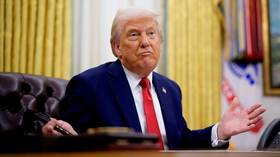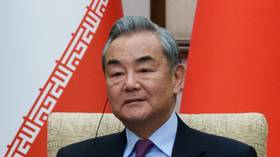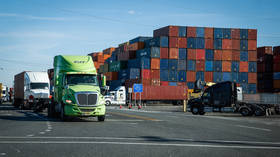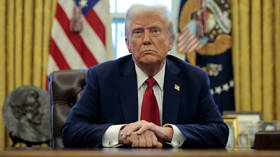Titanic inquiry ‘influenced by Freemasons’ to protect culpable members, archives suggest

Freemasons may have influenced the inquiry into the 1912 sinking of the Titanic to protect fellow members of the secretive society, according to analysis of a newly published archive of powerful members’ identities.
Published for the first time on the genealogy website Ancestry, the archive contains the names of up to 2 million members of the Freemasons. The lists may reveal evidence of potential interference in the inquiry into the maritime disaster.
The Freemasons are a secretive society often said to be composed of powerful and influential people who support each other through favors and alliances. In 2017, the society will mark three hundred years of its existence.
The new files appear to show a number of senior figures involved in the Titanic inquiry, in which more than 1,500 people perished after the ship hit an iceberg while crossing the Atlantic, were Freemasons. It also seems to show other Freemasons involved in the catastrophe escaped criticism.
A parallel inquiry by the US Senate was particularly scathing of the Titanic’s owner The White Star Company and Britain’s Board of Trade for allowing an inadequate number of life boats to be fitted onto the ship.
The British inquiry, led by Lord Mersey, who was himself a Freemason, did not criticize the Board of Trade.
The president of the Board of Trade at the time, Sidney Buxton, was found to have been a Freemason. The archive lists two further members of Mersey’s inquiry, naval architect Professor John Harvard Biles and engineer Edward Chaston, as being members.
Another influential figure, Lord Pirrie, who owned the Belfast shipyards where the Titanic was built and was a director at White Star’s parent company, also appears to have been a member, although the evidence is not conclusive.
It is known that one William Pirrie, the Quebec-born Lord Pirrie was also named William, was confirmed as a member of a Masonic lodge in Montreal, Canada, in 1904, the records show.
Speaking to the History.com website, Nic Compton, author of the book, “Titanic on Trial,” said: “The Titanic inquiry in Britain was branded a ‘whitewash’ because it exonerated most of those involved. Only three passengers were interviewed, and they were all from first class.”
Compton said the inquiry into the sinking was also sidetracked by a series of personalized public rows over the conduct of specific individuals involved in the tragedy, including whether one, Sir Cosmo Duff, paid a lifeboat crew not to go back and rescue people in the water around the stricken vessel.
Some of the most prominent figures named in the archives include Winston Churchill, the Duke of Wellington, explorer Ernest Shackleton, as well as renowned writers Oscar Wilde and Rudyard Kipling.
At the time the Titanic was the largest ship afloat and her sinking on her maiden voyage remains one of the most prominent disasters in modern maritime history. It continues to have a profound cultural influence.














